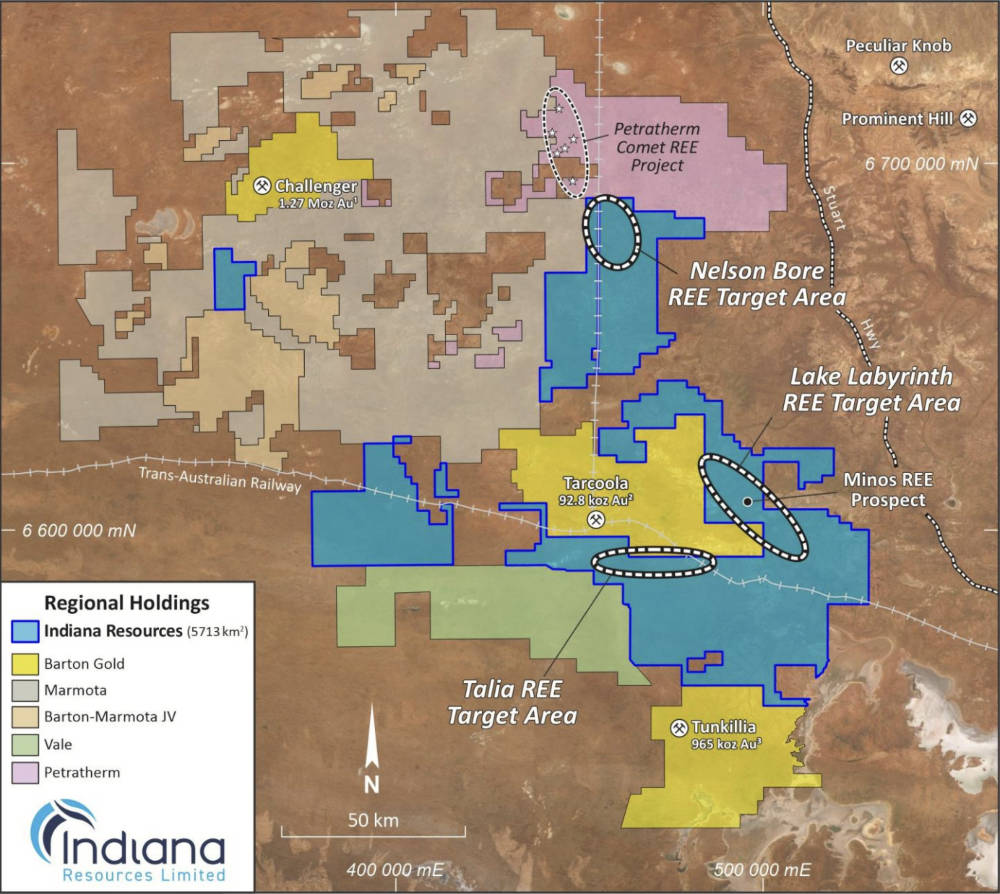REE beneficiation helps Indiana Resources deliver a ninefold lift on original feed grade at Minos

Beneficiation test work has successfully produced a 4.2% TREO with 1.8% MREO concentrate from Minos samples. Pic via Getty Images
- Beneficiation test work successfully produces 4.2% TREO concentrate with 1.8% MREO at Minos
- Result represents a 9X increase on the original flotation feed grade sourced from Minos mineralisation
- Further flotation testing to be carried out before hydrometallurgical extraction (acid leaching) testing begins
- Infill drilling to evaluate the distribution of the TREO and MREO enrichment zones to begin in Q3 2024
Special Report: Beneficiation test work of select clay-hosted rare earth samples sourced from Indiana Resources’ Minos prospect in South Australia has successfully produced a 4.2% TREO concentrate.
The result bodes well for further metallurgical testing and provides confidence for the company to proceed with the next round of drilling at the prospect where a REE target area 6km long by 4.5km – and still open in all directions – has been confirmed.
Minos, part of Indiana Resources’ (ASX:IDA) 5,713km2 Central Gawler Craton exploration package, also features a total rare earth oxide (TREO) enrichment layer of up to 40m thick in the weathering profile.
Previous aircore drilling intersected a regolith profile comprising soil/calcrete, ferricrete, clay and saprolite above strongly weathered/oxidised granitic basement.
High-grade, clay-hosted REE intersections of up to 26m @ 4,767ppm TREO and 1,894ppm MREO from 46m – including the outstanding sub-intersection of 1m @ 46,721ppm TREO and 22,255ppm MREO from 48m – indicate the presence of a sub horizontal zone of significant REE enrichment that extends from about 4m below surface to depths of up to 75m.
The highly valuable MREOs are prized for their use in manufacturing permanent rare earth magnets that are a key component in electric vehicle motors and wind turbines.

Practical “off the shelf” beneficiation
The 4.2% TREO concentrate, which includes 1.8% MREO content and an upgrade of nine times the original flotation feed grade, was produced from a program of compositing, wet screening, wet high gauss magnetic separation and sighter flotation conducted by REE metallurgical test work specialists Nagrom.
This was intended to determine the potential for practical “off the shelf” beneficiation of the clay-hosted REE mineralisation prior to assessment of hydrometallurgical extraction (acid leaching).
“These latest results from Minos clearly demonstrate the incredible REE potential of this project area in South Australia,” IDA Chair Bronwyn Barnes said.
“Initial ‘sighter’ test work has focused on beneficiation of the clay-hosted REE at Minos and provided outstanding results.
“High recoveries of both TREO and MREO to a 4% TREO flotation concentrate is particularly encouraging. We look forward to the next phase of hydrometallurgical test work which will focus on acid leaching of the concentrate.
“These results give the company the confidence to continue drilling to better define the size potential of our 6km x 4.5 km REE target which remains open in all directions. A further announcement will be made once all remaining test work results have been received.”
Further activity
IDA will now proceed with further flotation test work before carrying out acid leaching test work, which will determine exactly what is required to extract REEs, a process that has likely received a boost from the successful beneficiation test work.
It will then move to carry out infill aircore drilling in Q3 2024 to evaluate the distribution of the TREO and MREO enrichment zones and to identify the extent of the high-grade mineralisation contained within each zone.
This is essential as the lateral extent of the REE mineralisation has been significantly increased and remains to be fully tested by aircore drilling.
This article was developed in collaboration with Indiana Resources, a Stockhead advertiser at the time of publishing.
This article does not constitute financial product advice. You should consider obtaining independent advice before making any financial decisions.
Related Topics

UNLOCK INSIGHTS
Discover the untold stories of emerging ASX stocks.
Daily news and expert analysis, it's free to subscribe.
By proceeding, you confirm you understand that we handle personal information in accordance with our Privacy Policy.








